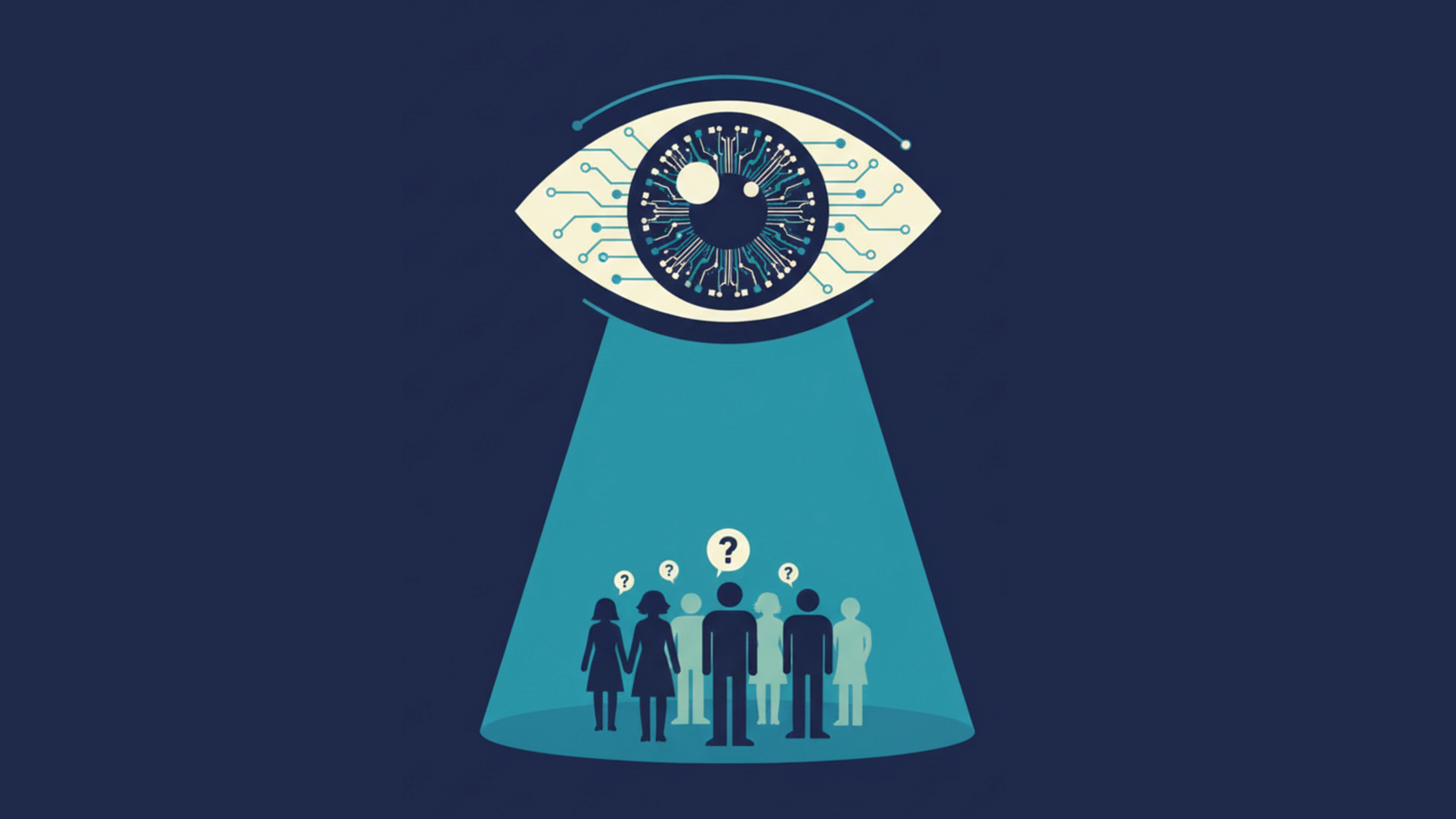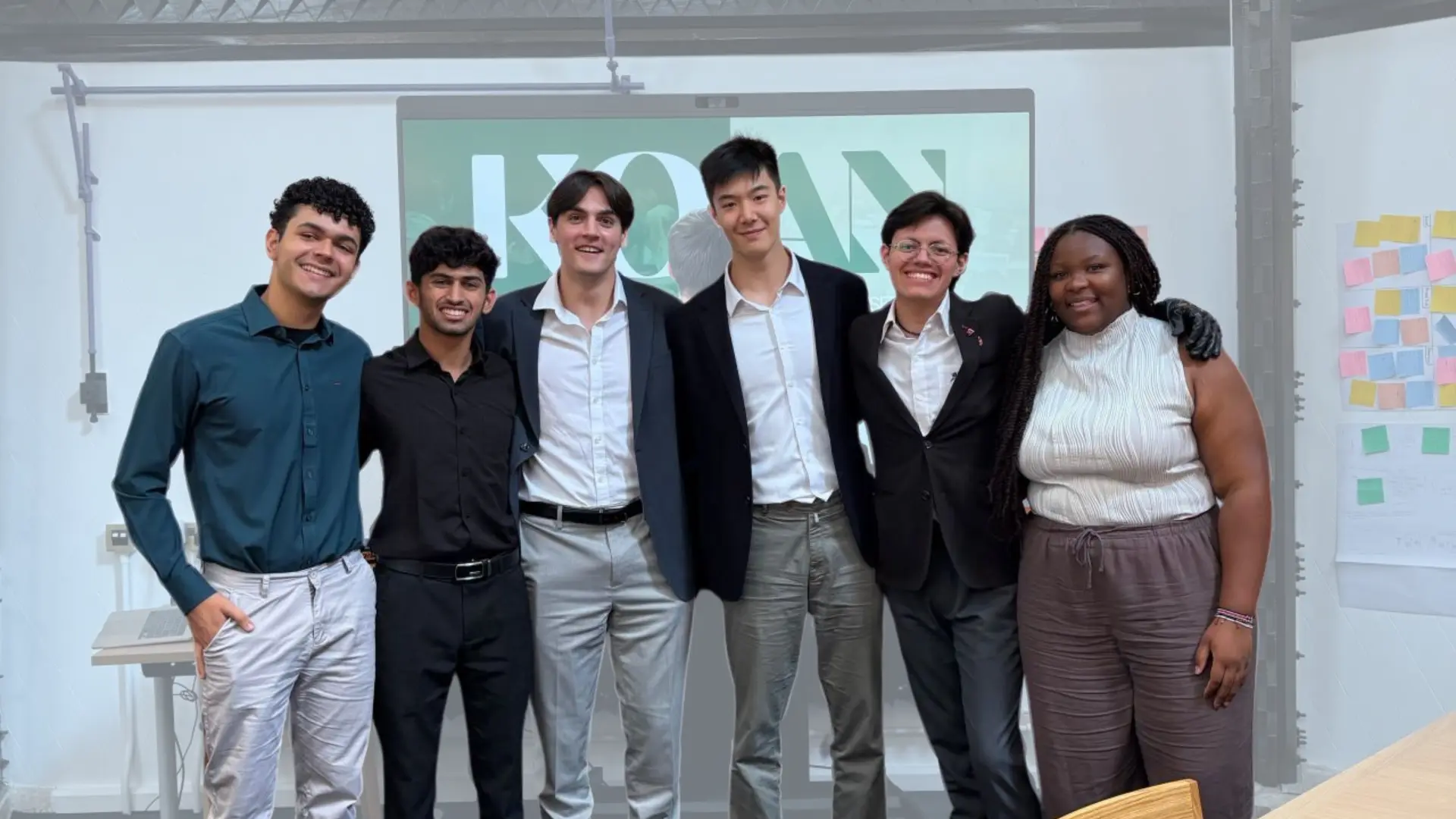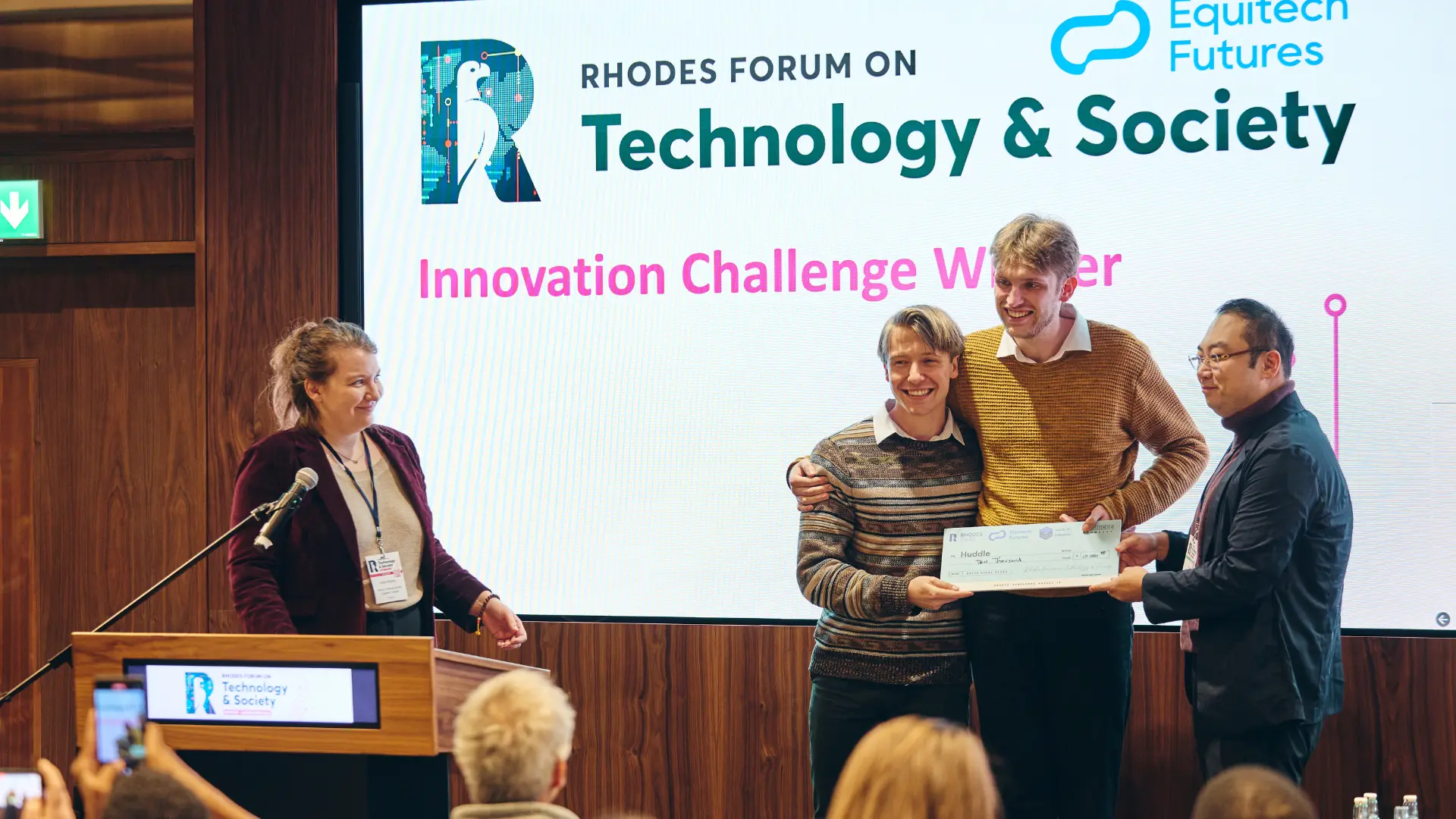
Futurescapes
The Future of Attention
Jun 29, 2025
5 min read
We are living through a silent crisis. People feel it in their bones: "I can't finish a book." "My brain feels fried." "I'm always scrolling, even when I don't want to be." This isn't just an individual struggle. It's a societal condition that threatens the very foundations of human flourishing, democratic life, and meaningful existence.
Our attention—the cognitive capacity that underlies learning, connection, decision-making, and imagination—is being systematically eroded by design. While attention has always been vulnerable, we are now witnessing its deliberate destabilization for profit. At Equitech Futures, we believe this represents one of the defining challenges of our time: can we build a technological civilization that enhances rather than diminishes our most essential human capacities?
This paper tells the story of that challenge and charts a path toward an "attentional society"—a future where our technologies, institutions, and culture are designed to protect and strengthen the cognitive foundations of human agency. It's a future within reach, but only if we act collectively and soon.
ACT I: THE CRISIS
The Silent Crisis
The evidence of our collective attentional crisis is overwhelming, measurable, and accelerating. A 2019 study by Microsoft found that the average human attention span dropped from 12 seconds in 2000 to 8 seconds by 2015—shorter than that of a goldfish. Among adolescents, research by Jean Twenge at San Diego State University reveals that teenagers spending more than three hours daily on electronic devices are 35% more likely to exhibit suicide risk factors. ADHD diagnoses have increased by 31% among children since 2003, with the steepest rises correlating precisely with smartphone adoption rates.
But this crisis extends far beyond young people. Knowledge workers now check email every 6 minutes on average and require 23 minutes to fully refocus after each interruption, according to University of California, Irvine research. The cumulative cognitive cost is staggering: employees report completing 40% less deep work than a decade ago, despite working longer hours. We are witnessing the systematic fragmentation of human consciousness on an unprecedented scale.
The crisis manifests differently across the globe, revealing its structural rather than inevitable nature. South Korean teenagers, despite high smartphone ownership, show better sustained attention metrics than their American counterparts—likely due to government regulations limiting game time and requiring built-in break periods. Finnish students, educated in systems that prioritize unstructured reflection time, consistently outperform international peers on measures requiring sustained cognitive engagement. Indigenous communities in the Amazon, where oral storytelling traditions remain strong, demonstrate attention spans that dwarf urban averages.
These variations prove a crucial point: the attention crisis is not the natural result of technological progress. It is the predictable outcome of specific design choices, economic incentives, and policy frameworks. Which means it can be changed.
Neuroscientist Adam Gazzaley's research reveals the mechanism behind this crisis. Chronic multitasking doesn't just reduce efficiency—it physically reshapes the brain, weakening the prefrontal cortex responsible for executive attention while strengthening neural pathways associated with distraction-seeking behavior. Heavy multitaskers develop what researchers call "popcorn brain"—a condition where the mind cannot help but seek stimulation, even during rest.
Yet the same neuroplasticity that enables this degradation also offers hope. Attention is remarkably trainable. Meditation practitioners show increased gray matter in regions responsible for attentional control. Even brief interventions work: students receiving just 8 hours of attention training demonstrate measurable improvements in focus and academic performance that persist for months.
The Extraction Machine
To understand why we're losing our attention, we must understand the economic forces systematically harvesting it. The attention economy represents one of the largest sectors of the global economy, though its true scale is hidden behind the language of "free" services. When we include all economic activity built on attention capture—advertising, e-commerce conversion, subscription services, and entertainment—the attention economy approaches $2.3 trillion annually, roughly equivalent to the GDP of India.
The unit economics reveal the extractive nature of this system. The average American adult's attention is monetized at approximately $35 per hour across all digital platforms, while the individual receives virtually nothing in return. This represents what economist Shoshana Zuboff calls "surveillance capitalism"—the systematic extraction of human experience as raw material for behavioral prediction and modification.
Like carbon emissions, attention extraction creates massive negative externalities that don't appear on corporate balance sheets. When platforms optimize for engagement, the cognitive costs—decreased ability to focus, increased anxiety, reduced sleep quality—are borne by individuals and society, not by the companies. Economist Tim Wu estimates these "attentional externalities" at approximately $120 billion annually in lost productivity, increased healthcare costs, and educational remediation.
The parallel to environmental economics is precise: just as factories that pollute rivers impose costs on downstream communities, platforms that pollute our cognitive environment impose costs on families, schools, and democratic institutions. The attention economy externalizes its true costs while privatizing its profits, creating what economists call a "market failure" that requires regulatory intervention.
The design principles driving this extraction are sophisticated and deliberate. Social platforms reward constant novelty, push notifications fragment thought, and the dominant success metric—"time on device"—transforms every moment into a battleground for mental presence. These systems don't just deliver content; they reshape cognition toward speed and stimulation, away from depth and integration.
Marshall McLuhan's insight that "the medium is the message" has never been more relevant. Our technologies don't just carry information—they restructure how we think. UCLA neuroscientist Gary Small's brain imaging studies show that internet searching activates different neural pathways than book reading. Heavy internet users show increased activity in decision-making regions but decreased activity in areas associated with deep reading comprehension and contemplative thinking.
This isn't an accident. It's the result of deliberate design choices optimized for engagement rather than human flourishing. Variable reward schedules keep users scrolling unpredictably. Social validation loops create psychological dependencies. Fear of missing out drives compulsive checking. These techniques, borrowed from casino design and operant conditioning research, are deployed at global scale with unprecedented precision.
The result is what researcher Tristan Harris calls "mass personalized persuasion"—AI systems that learn individual psychological vulnerabilities and exploit them for attention extraction. We face technologies that understand human psychology better than we understand ourselves, designed explicitly to override our conscious intentions and capture our mental resources.
ACT II: THE POSSIBILITY
What Attention Makes Possible
Before exploring solutions, we must understand what we're fighting for. Attention is not just the absence of distraction—it's the cognitive foundation of everything we value about human life. When we imagine an "attentional society," we're envisioning a future where humans can think clearly, connect authentically, choose consciously, and create meaningfully.
In such a society, individuals would possess what we might call "cognitive sovereignty"—meaningful control over their mental resources and the environments that shape them. Children would grow up with neural architectures optimized for contemplation and insight rather than speed and stimulation. Workers would engage in deep, meaningful labor that uses their full cognitive capacities. Citizens would participate in democratic discourse characterized by careful deliberation rather than reactive polarization.
This is not nostalgic fantasy. Research shows exactly what becomes possible when attention is protected and cultivated. Students in contemplative education programs demonstrate improved emotional regulation, enhanced empathy, and better academic performance across subjects. Workers in organizations that protect focus time report higher job satisfaction, better work quality, and reduced burnout. Communities that maintain traditional attention practices show stronger social cohesion and more effective collective decision-making.
At the interpersonal level, protected attention enables the deep presence necessary for authentic relationship. Eye contact, sustained conversation, and emotional attunement all require cognitive resources that are systematically undermined by fragmenting technologies. When attention is protected, research shows measurable improvements in relationship quality, family satisfaction, and community connection.
The collective benefits extend to democratic participation itself. Citizens capable of sustained attention can engage with complex policy issues, resist manipulation and misinformation, and participate in the kind of deliberative discourse that democracy requires. Research by political scientists shows that voters consuming information in focused rather than distracted states make dramatically better decisions, show increased resistance to emotional manipulation, and demonstrate greater capacity for nuanced political thinking.
Perhaps most importantly, attention makes possible what philosopher Simone Weil called "the rarest and purest form of generosity"—the ability to be fully present with others' suffering and joy. In a world of overwhelming need and complexity, the capacity to stay with difficulty, to attend to what matters most, becomes a form of moral action.
The Global Laboratory
Around the world, governments, organizations, and communities are experimenting with ways to protect and strengthen human attention. These efforts provide proof of concept for the attentional society and offer practical models for broader implementation.
The European Union has emerged as the global leader in treating cognitive liberty as a fundamental right. The Digital Services Act, which took full effect in 2024, requires large platforms to assess and mitigate "systemic risks" to mental health and democratic discourse. Early compliance reports show promising results: platforms operating under DSA rules demonstrate 30% lower rates of problematic use compared to their implementations in non-regulated markets. As European Commissioner Thierry Breton stated, "The right to think clearly is as fundamental as the right to breathe clean air."
France has pioneered workplace attention protection through its "right to disconnect" law, which prohibits employers from contacting workers outside business hours except in emergencies. Early studies show French workers report higher job satisfaction and perform better on attention-demanding tasks compared to counterparts in countries without such protections. The policy recognizes that cognitive recovery time is essential for both individual wellbeing and productive work.
Asian countries have developed collective approaches that balance individual freedom with social responsibility. South Korea's "Cinderella Law" restricts online gaming for minors between midnight and 6 AM while requiring built-in break periods for extended play sessions. Despite initial criticism, longitudinal studies show South Korean teenagers have better sleep quality, academic performance, and reported wellbeing compared to peers in countries without such regulations.
Japan offers a cultural rather than regulatory model. The concept of "digital minimalism" has become mainstream, with employers encouraging "notification-free Fridays" and schools teaching "attention hygiene" as a core life skill. Japanese companies report that cultural shifts toward attention protection actually improve rather than harm productivity and innovation, suggesting that protecting attention enhances rather than constrains economic performance.
Indigenous communities worldwide demonstrate that sustained attention practices are cultural knowledge that can be transmitted and strengthened through shared practice. Australian Aboriginal communities maintain "deep listening" traditions that train attention span and emotional regulation from childhood, with practitioners demonstrating attention spans 200% longer than urban averages. Native American council processes explicitly slow down community decision-making to require sustained attention to multiple perspectives, resulting in higher social cohesion and more effective collective decisions.
These diverse approaches reveal several crucial insights. First, attention protection enhances rather than constrains human freedom and economic prosperity. Second, cultural and regulatory approaches can work together synergistically. Third, different societies can protect attention in ways that reflect their unique values and governance structures. Most importantly, these examples prove that the attention crisis is not inevitable—it's a policy choice.
ACT III: THE TRANSFORMATION
Rights, Rules, and Redesign
Building an attentional society requires coordinated intervention across legal, technological, and policy domains. These changes must work together as an integrated system rather than isolated reforms.
The legal foundation begins with recognizing attention as a fundamental right. In 1890, Samuel Warren and Louis Brandeis articulated a "right to privacy" in response to disruptive new technologies. Today, we need a similar conceptual breakthrough: the right to cognitive liberty. Legal scholar Julie Cohen argues that this right—the freedom to mental self-determination—is emerging as the next frontier of human rights.
A comprehensive attention rights framework would include the right to cognitive autonomy (meaningful control over one's mental attention), the right to undistracted time (access to environments that support sustained focus), the right to cognitive transparency (understanding how technologies are designed to capture attention), and the right to attention equality (ensuring that cognitive resources aren't distributed by economic class alone).
Enforcement would require new mechanisms adapted to the subtle, cumulative nature of attentional harms. Cognitive impact assessments would require new technologies to evaluate their effects on human attention, similar to environmental impact studies. Attention auditing would mandate regular assessment of platforms' and employers' cognitive impacts on users and workers. Collective action mechanisms would enable communities to take legal action against systematic undermining of cognitive wellbeing.
Technological redesign must occur simultaneously with legal protection. The current crisis stems largely from design choices optimized for engagement rather than human flourishing. Alternative design principles are emerging from research in cognitive science and human-computer interaction.
Cognitive load management means interfaces should minimize extraneous mental demands, supporting users' primary goals rather than competing for attention. Technology should align with natural attention rhythms, recognizing that humans focus in 90-120 minute cycles followed by restoration periods. Instead of infinite scroll, attentional technology should provide natural endpoints and closure. Most importantly, technologies should help users understand their own attention patterns, providing metacognitive feedback that enables more intentional choices.
Several existing technologies demonstrate these principles. Applications like Bear (writing), Forest (focus), and Freedom (blocking) prioritize user wellbeing over engagement metrics, with users reporting significantly better outcomes in focus, completion rates, and life satisfaction. The technology industry needs technical standards for measuring and reducing cognitive load, similar to accessibility or environmental standards.
Policy frameworks must address attention as civic infrastructure requiring public investment and protection. This includes regulating dark patterns and manipulative design, establishing attentional protections in schools and public institutions, funding research into cognitive impacts of technology, and supporting public alternatives to commercial platforms optimized for extraction rather than flourishing.
International cooperation is essential given the global nature of digital platforms. Mechanisms could include a global attention rights framework similar to international human rights treaties, technical standards coordination for measuring cognitive load, best practices sharing between countries, and collaborative research initiatives to understand attention science across different cultural contexts.
Cultural Renaissance
Legal and technological changes alone cannot restore attention—they must be supported by cultural transformation that treats sustained focus as valuable and worth protecting. This cultural shift requires new rituals, practices, and social norms that support contemplative engagement.
Educational transformation provides the foundation for cultural change. Schools must evolve from industrial-age institutions emphasizing compliance and information transmission to learning environments that cultivate attention as a core competency. Finland's integration of "reflection time" into daily schedules—periods where students practice sustained attention without external stimuli—shows measurable improvements in academic performance and student wellbeing.
Contemplative pedagogy integrates mindfulness and reflection practices directly into academic curricula, with research showing improved attention regulation, emotional control, and academic performance. Deep reading instruction teaches sustained engagement with complex texts, rebuilding neural pathways that support inference, empathy, and critical analysis. Physical learning environments must be redesigned to support attention, with natural light, acoustic optimization, and flexible spaces that accommodate different cognitive needs.
Teacher training must include attention science and contemplative practices. Teachers who practice mindfulness show better emotional regulation, reduced burnout, and improved ability to support student attention development. Assessment systems should reward sustained engagement and contemplative thinking rather than speed and immediate recall, moving toward portfolio-based evaluation, self-assessment, and process documentation.
Workplace transformation requires cultural shifts that value depth over responsiveness, quality over quantity, and sustained engagement over constant availability. Organizations implementing "deep work" practices—protected focus time, communication batching, meeting hygiene—report improved productivity, employee satisfaction, and innovation outcomes.
Companies creating diverse work environments with quiet zones, collaboration spaces, and individual focus areas better support different cognitive needs. Technology tools for workplace attention should include intelligent notification management, attention analytics, and collaborative systems that coordinate team attention while respecting individual cognitive rhythms.
Leadership modeling proves crucial for cultural change. When managers and executives demonstrate attention-protecting behaviors—respecting focus time, minimizing unnecessary interruptions, prioritizing thoughtful decision-making—these practices become organizationally valued rather than individually stigmatized.
Community-based cultural change recognizes that individual behavior modification is difficult to sustain without social support. Digital sabbaths create regular periods of technological disconnection for families and communities, with research showing improved relationships, better sleep, and increased life satisfaction. Attention retreats offer community-based contemplative education that emphasizes collective rather than merely individual practice.
Contemplative spaces in urban environments—meditation gardens, quiet transportation cars, reflection areas in workplaces and schools—signal cultural commitment to protecting conditions for deep thinking. Slow media movements celebrate journalism, podcasting, and cultural products designed for depth rather than speed, creating alternative information ecosystems that support rather than fragment attention.
Cultural transformation ultimately requires shifting what we value and celebrate. Instead of treating busyness, multitasking, and constant connectivity as status symbols, we need cultural narratives that celebrate depth, presence, and sustained engagement. This shift must occur across media representation, educational values, workplace culture, and social platforms.
Navigating the Transition
The transition to an attentional society will face significant resistance and implementation challenges that must be anticipated and addressed thoughtfully.
Critics argue that regulating attention-capturing technologies could stifle innovation and technological progress. However, history suggests that well-designed regulations often spur rather than inhibit innovation by establishing clear standards and level playing fields. Environmental regulations didn't stop technological development—they redirected it toward cleaner, more efficient solutions. Similarly, attention regulations could redirect innovation toward human-centered rather than extraction-focused design.
The current attention economy may actually inhibit innovation by creating market incentives for addictive rather than useful technology. When success is measured by time on device rather than user benefit, companies invest in psychological manipulation rather than genuine value creation. The most innovative companies are already moving toward attention-positive design through features like Screen Time, Digital Wellbeing tools, and "take a break" reminders.
The freedom and choice argument holds that attention regulation represents paternalistic interference with individual autonomy. However, this ignores how choice operates in manipulative environments. When platforms use sophisticated psychological techniques—variable reward schedules, social validation loops, fear of missing out—the resulting choices may not reflect genuine user preferences. True freedom requires positive liberty: not just the absence of external constraints, but the presence of genuine agency and self-determination.
Concerns about digital divides—wealthy users accessing premium attention-positive technologies while lower-income users remain stuck with exploitative free platforms—require proactive policy responses. However, the current system already creates profound attention inequalities. Wealthy families can afford private schools, tutoring, and enrichment activities that support sustained attention development, while low-income children often attend under-resourced schools and rely on ad-supported educational technology.
Attention regulation could actually reduce these inequalities by establishing minimum standards for all users and ensuring that basic attention-supporting technologies are accessible regardless of economic status. Just as we guarantee public education and healthcare, we could guarantee access to attention-supporting digital environments as a matter of cognitive justice.
Different age cohorts require tailored approaches recognizing their distinct relationships with technology. Children and adolescents—digital natives who developed alongside fragmenting technologies—need environmental protection through screen-free schools, explicit attention training integrated into education, and technology designed specifically for developing brains. Adults who adopted digital technologies after their cognitive patterns were established may be more motivated to adopt attention-protective practices but need support for behavioral change. Older adults require digital literacy focused on recognizing manipulative design and technology interfaces designed for cognitive accessibility.
Artificial intelligence presents both the greatest threat and the greatest opportunity for attention protection. Current AI systems often contribute to attention fragmentation through personalized recommendation algorithms optimized for engagement. However, AI also offers unprecedented opportunities to support human attention through intelligent filtering systems, personalized attention training, cognitive load management, and contemplative AI designed explicitly to support rather than capture human focus.
The key is ensuring that AI development prioritizes human flourishing over engagement metrics through values-based design, transparency and user control, collective benefit optimization, and ethical governance frameworks that require attention impact assessment.
ACT IV: THE FUTURE
Life in an Attentional Society
What would daily life look like in a society designed to protect and strengthen human attention? This vision, grounded in existing research and pilot programs, offers a concrete glimpse of the future we're working toward.
Children would grow up in environments optimized for cognitive development rather than attention extraction. Schools would integrate sustained reading, reflection time, and contemplative practices into daily routines. Technology in educational settings would be designed to support learning rather than capture engagement, with natural endpoints, cognitive load optimization, and explicit attention training. Physical learning environments would feature natural light, acoustic design, and flexible spaces that accommodate different cognitive needs and learning styles.
Families would have access to public spaces designed for contemplation and connection—parks with quiet zones, libraries as attention sanctuaries, community centers with device-free areas. Public transportation would include quiet cars, and urban planning would consider cognitive as well as physical environments. Children's media would be governed by attentional standards, with built-in pauses, narrative closure, and bans on exploitative psychological techniques.
Workers would engage in meaningful labor that utilizes their full cognitive capacities. Workplaces would protect focus time through communication batching, meeting hygiene, and environmental design that supports deep work. Employees would have legal protections for cognitive wellbeing, including the right to disconnect outside work hours and attention impact assessments for workplace technologies.
Organizations would measure success through attention-positive metrics that prioritize employee wellbeing, work quality, and long-term innovation over immediate responsiveness and availability. Technology tools would support rather than fragment attention through intelligent notification management, cognitive load monitoring, and collaborative systems designed for human cognitive rhythms.
Citizens would participate in democratic discourse characterized by thoughtful deliberation rather than reactive polarization. News media would prioritize depth over engagement, accuracy over virality, and public interest over advertising revenue. Social platforms would optimize for meaningful connection and community building rather than time on device and emotional manipulation.
Voting and civic participation would involve sustained engagement with complex policy issues, supported by public education in critical thinking and attention management. Community decision-making would incorporate traditional deliberative practices that slow down discussion and require sustained attention to multiple perspectives.
Technology would serve human flourishing rather than exploit human psychology. Platforms would operate on subscription or public funding models that align provider incentives with user wellbeing. AI systems would be designed to enhance rather than replace human cognitive capacities, providing intelligent filtering, personalized learning support, and contemplative assistance.
Devices would include built-in attention protection features, with cognitive load indicators, natural usage endpoints, and design optimized for specific purposes rather than infinite engagement. Technical standards would ensure that all digital tools meet minimum requirements for cognitive accessibility and attention support.
Cultural norms would celebrate depth, presence, and sustained engagement rather than busyness, multitasking, and constant connectivity. Digital sabbaths would be widely practiced, creating regular periods for sustained attention and community connection. Contemplative practices would be mainstream, with community programs, workplace initiatives, and educational curricula supporting attention development across the lifespan.
Media and entertainment would include substantial content designed for sustained engagement rather than immediate gratification. Book reading, long-form journalism, contemplative podcasting, and deep conversation would be culturally valued and widely accessible. Public funding would support arts and media that enhance rather than fragment human attention.
This society would measure success through indicators of cognitive wellbeing alongside economic metrics. National attention surveys would track population capacity for sustained focus, educational systems would assess contemplative as well as academic development, and workplace policies would be evaluated based on their support for meaningful work and human flourishing.
Most importantly, individuals would possess genuine choice about how to allocate their cognitive resources. Rather than having attention extracted without consent, people would have meaningful control over their mental environments and the technologies that shape their thinking. This cognitive sovereignty would form the foundation for authentic autonomy, democratic participation, and human flourishing in a technological age.
The Path Forward
The transition to an attentional society requires coordinated action across multiple domains, with each level of intervention reinforcing the others to create systemic transformation.
Individual Action provides the foundation for broader change while offering immediate benefits. Practicing sustained reading rebuilds neural pathways for deep comprehension—start with 20 minutes daily and gradually build capacity. Implementing communication batching by checking email at designated times rather than continuously improves focus while modeling attention-protective behavior. Creating contemplative spaces free from digital distractions demonstrates the value of protected cognitive environments.
Supporting attention-positive media through conscious consumption and financial backing helps build sustainable alternatives to the attention economy. Advocating in communities by working with schools, workplaces, and civic organizations to implement attention-protective policies creates the social infrastructure necessary for widespread change.
Organizational Leadership carries particular responsibility for protecting attention at scale. Leaders can model contemplative decision-making, implement attention-protective policies, invest in contemplative infrastructure, and measure attention-related outcomes alongside traditional performance metrics. Organizations that prioritize cognitive wellbeing will likely gain competitive advantages through improved innovation, employee satisfaction, and work quality.
Educational institutions must transform themselves into environments that cultivate rather than undermine attention. This requires teacher training in attention science, curriculum redesign that integrates contemplative practices, physical environment optimization, and assessment reform that rewards sustained engagement over quick performance.
Businesses can implement deep work practices, create diverse cognitive environments, adopt attention-positive technologies, and develop workplace cultures that value depth over responsiveness. These changes typically improve rather than harm productivity and innovation while significantly enhancing employee wellbeing.
Policy Advocacy enables systemic change beyond what individuals and organizations can achieve alone. Citizens and advocacy organizations can support digital rights legislation that establishes attention as a fundamental right, demand corporate accountability through regulations requiring technology companies to internalize cognitive costs, fund public alternatives to commercial platforms, and advocate for international cooperation on attention protection.
Specific policy priorities include prohibiting dark patterns and manipulative design, establishing attentional protections in schools and public institutions, requiring cognitive impact assessments for new technologies, creating regulatory agencies empowered to enforce attention rights, and investing in research on attention science and contemplative practices.
Cultural Transformation provides the foundation that makes all other interventions sustainable. This requires creating and supporting cultural products that celebrate contemplative practices, normalizing technology boundaries and digital sabbaths, developing intergenerational programs that share attention wisdom, and establishing community rituals that support collective attention.
Media representation should include stories that celebrate sustained engagement rather than glorifying busyness and distraction. Educational and workplace cultures should reward deep thinking over quick performance. Social platforms should be redesigned to celebrate meaningful engagement rather than viral content and immediate reactions.
International Coordination addresses the global nature of the attention crisis through mechanisms like a global attention rights framework, technical standards coordination, best practices sharing between countries, and collaborative research initiatives. The European Union's leadership on digital rights provides a model for broader international cooperation.
Technological Development must be redirected toward human-centered rather than extraction-focused design. This requires values-based AI development, attention-positive platform design, cognitive accessibility standards, and business models that align provider incentives with user wellbeing rather than engagement maximization.
Measurement and Assessment should track progress through new metrics that prioritize cognitive wellbeing alongside economic indicators. This includes national attention surveys, educational attention assessments, workplace cognitive health measures, and democratic engagement quality indicators.
Timeline and Implementation should recognize that cultural transformation takes time while some interventions can have immediate effects. Legal frameworks and regulatory agencies can be established within years, educational reforms can be piloted and scaled over decades, and cultural shifts may require generational change. The key is beginning comprehensive action now while maintaining long-term commitment to systemic transformation.
The path forward requires unprecedented cooperation across sectors, disciplines, and communities. But the stakes could not be higher. We are deciding what kind of minds we want to have, what kind of society we want to live in, and what kind of future we want to create for coming generations.
The attention crisis represents both our greatest challenge and our greatest opportunity. By protecting and strengthening the cognitive foundations of human flourishing, we can build not just a more attentional society, but a more just, creative, and wise civilization. The future depends on what we attend to. Let's choose carefully, and choose together.
Conclusion: The Choice Before Us
Simone Weil wrote, "Attention is the rarest and purest form of generosity." In our age of manufactured distraction, the ability to focus—to stay with complexity, to be present with others—has become a radical act. But attention is more than individual virtue. It is the cognitive foundation of everything we value: learning and wisdom, authentic connection, democratic participation, and the contemplative engagement that makes life meaningful.
We stand at a historical inflection point. The same technologies that threaten to fragment our attention beyond repair also offer unprecedented opportunities to support human cognitive flourishing. The same global connectivity that enables attention extraction also enables unprecedented coordination in protecting cognitive liberty. The same artificial intelligence that could manipulate our minds could also amplify our capacity for wisdom and contemplation.
The choice is ours, but only if we act collectively and decisively. The attention crisis is not inevitable—it is the result of specific economic incentives, design choices, and policy frameworks that can be changed. Around the world, communities are already experimenting with alternatives that prove another future is possible.
Building an attentional society will require legal frameworks that protect cognitive liberty, economic models that reward human flourishing over engagement, educational systems that treat attention as core curriculum, technological design that serves human agency, and cultural transformation that treats sustained focus as sacred.
This is not about returning to some imagined pre-digital paradise. It's about moving forward consciously, designing technologies and institutions that serve human thriving rather than extracting from it. It's about recognizing that in an age of artificial intelligence and global connectivity, the capacity for sustained human attention becomes more precious, not less.
At Equitech Futures, we believe the future of attention is the future of human agency itself. When we protect our capacity to focus, we protect our ability to think critically, connect authentically, choose consciously, and imagine collectively. We protect the cognitive foundations of democracy, creativity, love, and wisdom.
The attention crisis is real, but it's not permanent. We have the science, the examples, and the tools needed to build a more contemplative future. What we need now is the collective will to treat attention as the shared resource it has always been and the courage to design institutions worthy of our most precious cognitive gifts.
The future depends on what we attend to. The time to choose is now.
This paper represents the collective thinking of Equitech Futures and builds on research and insights from cognitive scientists, digital rights advocates, contemplative practitioners, and policy experts worldwide. We invite response, critique, and collaboration in building the attentional future our communities deserve.
More articles
.webp)
Newsroom
No Innovator Left Behind: How Equitech Futures uses philanthropic capital to maximize impact

Newsroom


















.webp)




.webp)


.webp)









.webp)















.webp)

.webp)


.webp)


.webp)






.webp)



